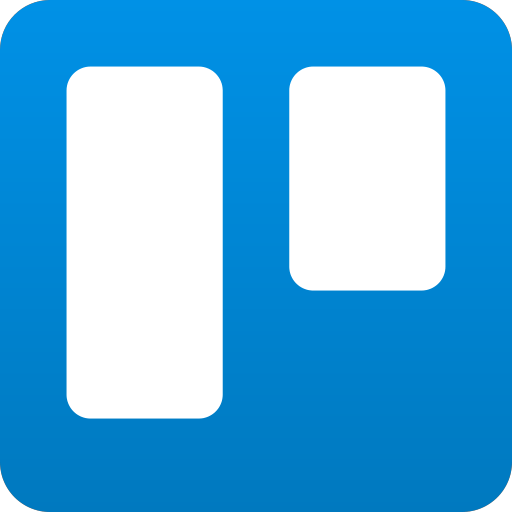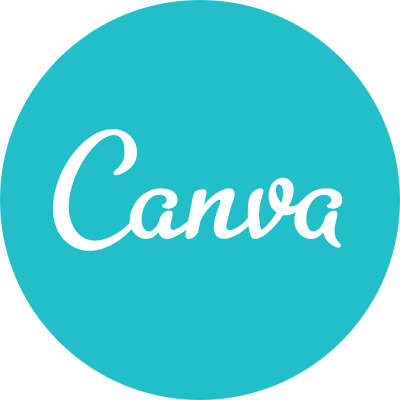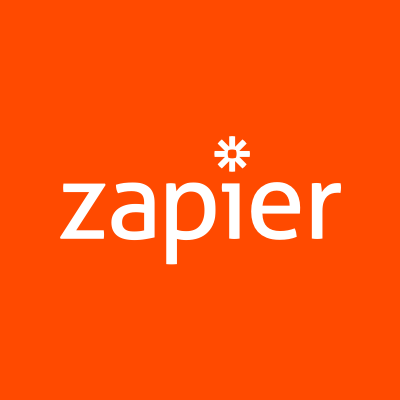How I Built My Own Business Improving Online Dating Profiles
Hello! Who are you and what business did you start?
Hi everyone, my name is Shane and I’m the founder of The Match Artist. We help singles take amazing pictures for their online dating profiles. Our flagship product is the 3 hour Executive shoot, which gets you about 100 different photos in 7 different settings.
Most importantly, this package comes with an e-mail course and one-on-one coaching so you can take better photos in the future. Many people (especially guys) are horrible at taking pictures. The Match Artist teaches you how to look at the camera, and how to show your most attractive and authentic self. This empowers you to take better photos, even after the shoot is over.
The Match Artist is More Than a Typical Photography Company
In addition to coaching individuals, The Match Artist has pioneered a whole different genre of photography. Our pictures are specifically tailored to make our clients look better online. We work with our clients to figure out exactly who they are, and we shoot them doing things they would be doing in their day-to-day life.
We want potential matches to understand who you are and what you do without having to read your bio. This ensures that our clients not only match with more people but also match with singles who are a good fit for them. We dive deep into who our clients are and take candid photos of them doing the things they enjoy.
We started this business in January 2018, and we have helped over 100 singles take pictures for their profile. We usually average between $5,000- $6,000 a month in revenue.

What's your backstory and how did you come up with the idea?
I have always been an entrepreneur. When I was in high school, I wanted to start my own business, so I took to one thing that I knew how to do- mow lawns.
Afterward, while I was in college, I started a mobile DJ business, which was a great way to earn some extra cash in college. After graduating from NDSU with a degree in Computer Science, I took a full-time job working as a software developer. While working as a developer, I really wanted to start a SaaS Company, which translates to “Software as a Service”, so I did just that. I created Midwest Streams - Simple Funeral Webcasting, which helps funeral directors webcast their funerals.
I ended up spending too many hours working on Midwest Streams while I was at my software developer job, so my employer fired me. (If you are reading this, I really am sorry!) This happened in February of 2014, and Midwest Streams was only making $400 a month. I decided not to go back to work and try my hardest to grow my company. I had some savings, but burnt through it pretty quick, as it’s really hard to survive with only $400 a month.
Unfortunately, that year, I did not have much success with growing Midwest Streams. Driven by the pure need to survive, I went back to my tiny DJ company and did anything I could to get a gig or two so I could pay my rent. It worked! I got my DJ company doing about $80k a year in revenue, which allowed me to live comfortably and focus more on my SaaS.
Around that same time, I was a single male in his 20s trying to learn the ropes of online dating. It was surprisingly challenging. I was doing fine with offline dating, but online dating seemed almost impossible. Once someone swiped right on me, I was able to have a conversation and set up a date, but my main problem was that for every 100 girls I swiped right on, only 1 or 2 matched with me. You can see my Tinder profile pictures below.


It’s cringy to look back at these pictures, but at the time I thought these were okay photos. I did what every other single guy does- we go to our Facebook and choose the most recent photos, even if they are terrible.
It was at this same time that I met Nick, a local wedding photographer. We eventually became good friends over our mutual interest in playing music. One night while just messing around, he took some photos of me.
Even though it was super casual and just friends goofing around, those photos were the best photos that were ever taken of me. So I uploaded one of the photos to Tinder, and almost instantly a lot more girls were swiping right on me. So I called Nick and asked if we could do a real photo-shoot. Except this wasn’t going to be your typical head-shot session.
I wanted photos showing off who I was to highlight that I’m an interesting person. So, I planned a fun day full of activities I enjoyed and had Nick follow me around with his camera.


These photos were a complete game changer! I was matching with about half the girls that I was swiping on. I had a lot of fun dating for about two years while I was still hacking away on my SaaS. However, in May of 2017, I went on my last first date. I met my wonderful girlfriend, Molly.

Finally, two years after Nick took those photos of me, I called him up and told him I wanted to start a business that is 100% tailored to taking photos of singles. He agreed, and my girlfriend Molly came up with the name, “The Match Artist”.

Take us through the process of designing, prototyping, and manufacturing your first product.
Nick and I spent about four months perfecting the idea of what we wanted The Match Artist to represent before doing our first shoot.
Once you have product-market fit you should focus 100% of your energy into building trust with your potential clients.
There are thousands of photographers in the world, and it was vital that we weren’t just another photography company. This is where we started pioneering a different genre of photography. We designed the entire process to make sure our customers look their best on their dating profiles. We did countless hours of research on what profiles do best online, and we also figured out how to make people who are bad at taking photos to take better photos.

Describe the process of launching the business.
Launching The Match Artist was fairly simple. I think a lot of aspiring entrepreneurs overthink this part; the most important thing is to just do it. Most people think your launch is going to be this huge thing, and just overnight you’re going to have a ton of customers. This usually isn’t the case. I find it best to come up with a way to service a small handful of customers and grow from there. After we had an idea of what the final service would look like, we rented an Airbnb for the weekend and posted on many different singles groups that we were offering a free photo-shoot. We had about 10 people take us up on the offer and that’s how we jump-started our business.

From there we got a few recommendations, and most importantly we got a bunch of reviews to help legitimize our business. Another huge benefit of our initial shoot was that it allowed us to reach back out to these clients to ensure that our style of photography was actually helping them get better results online.
We learned so much from that weekend packed with photo-shoots. While Nick was taking photos, I was scribbling away on a notepad taking notes. We spent the next two months making our process the best it could be. We finally launched about a month later and in April 2018 The Match Artist had its first paying customer.
Since launch, what has worked to attract and retain customers?
We have tried all sorts of different techniques to get more customers through the door. After a lot of testing, we have decided that our main focus on acquiring new customers is SEO. We have put a lot of effort into ensuring that we rank number 1 for “Online Dating Photographer” in the specific cities that we service.
We are always trying new techniques to get more customers to our website, but once someone fills out the contact form, our funnel is completely optimized. You can see our workflow here.
If you would like to see the automation in action, I created a mock funnel that readers of Starter Story can go through here.
How are you doing today and what does the future look like?
Today, The Match Artist is doing great! Every month we are slightly increasing our bookings. Nick has gone completely full time running the business. We have a steady 5k a month in revenue and are finally at the point where we are confident with our pricing and our product. We plan on doubling down and running huge paid ad campaigns in the next few months.
We are also planning on launching a “Behind the Scenes” YouTube channel. I love the entrepreneurship community and plan on sharing with other entrepreneurs our journey as we grow this from a small side project into a serious business with 6-7 figures in profit.
Through starting the business, have you learned anything particularly helpful or advantageous?
One thing I learned along the way is that once you have product-market fit you should focus 100% of your energy into building trust with your potential clients.
People may want to use our services, but we need to make sure that they trust us in the process. Our huge value proposition is “Go on better dates,” and, of course, everyone wants to go on better dates, but they just don’t trust that by forking over their Credit Card and allowing us to take their pictures they will actually go on better dates. This is why everything from our website to our emails is focused on gaining the trust of our customers.
Your first business should have a business model that allows it to be profitable with just 10 customers. You should start with something small, and have a rock-solid plan of getting your first 10 customers.
Most importantly, as an entrepreneur, you better be prepared to live up to that promise. I’m 100% committed to ensuring that every single one of our clients actually does go on better dates with their new pictures.
Another thing I learned was to not automate too early. As a programmer, I love setting up all these complex tools and workflows to optimize my business. However, in the early days, I spent way too much time automating things. Before we even had our first customer, I had a whole automation system setup to auto-send emails, and update our CRM. This was cool, but we quickly changed many things in our business. That’s the downside of automation; it makes changing things much harder. If I were to do it all over again, I would have done everything manually until I had at least a year of The Match Artist under my belt.
What platform/tools do you use for your business?
Lucid Chart - Lucid Chart is how we plan everything. All of our processes, and automation is completely mapped out in this program.
ButterCMS - This is a newer tool that we are bringing on to our stack. We use ButterCMS to power our website. I chose Butter because I wanted to have 100% control over how my website is handled. This tool allows us to write our website in our favorite programming language but still allows our content writers to publish content with ease. This tool also allows us to make a webpage for each client to show information specific to their photo session.
Book Like a Boss - This is our appointment booking software. This is how we manage all clients to easily book a call with us.
Trello - Using Trello we are able to ensure every client gets a personalized experience. We automatically create cards for every client once someone books a photoshoot. Each card has all the tasks needed to ensure their photoshoot is a success.
GSuite - Hands down the best email tool on the market. I have used Outlook and Zoho; GSuite is so much easier to use.
Hubspot - Hubspot makes keeping track of our clients a breeze. I’m a big fan of their email scheduling options. So many times someone will not want to pull the trigger on a photoshoot and tells us to reach back out in a few months. With Hubspot, I can compose the followup email, and schedule it to send in a few months.
Pixieset - This is our photo gallery software. This is how we deliver all of our photos to our clients.
Zapier - Zapier is the glue that holds our entire business together. We use a lot of tools, and all of them are integrated into harmony with Zapier. This is probably my favorite tool out of the entire stack.
Typeform - Another favorite tool, Typeform, allows us to collect information from our customers and potential customers. Recently we connected it to Stripe and this is how we take payments. If you are curious about what this looks like you can check it out here.
Drip - Drip is our email marketing provider. We chose Drip over Mailchimp because it really allows us to deeply personalize all of our emails. I believe that our customers should never have to give us the same information twice. Using Drip, I can auto-populate all email links to have custom URL parameters so the tools don’t need to ask for their name or email again.
Stripe - Every single payment we take is through Stripe. We usually do this through Typeform. We also integrated Stripe directly with our website so customers can pay there as well.
Bonjoro - Everything we do at The Match Artist is extremely personalized. This allows me to send good luck videos to our clients on the morning of their shoot.
Upwork - Anytime I need help with branding or programming, I turn to Upwork to hire a freelancer to help us out. Our entire branding was done from someone that we hired off of Upwork.
Canva - I am not a designer. However, Canva allows me to easily create digital design assets that look professional. I’d highly recommend using Canva for anyone who isn’t a designer.
What have been the most influential books, podcasts, or other resources?
Start Small, Stay Small. I’m also a big fan of the podcast Startups for the Rest of Us. This book and podcast really focus on bootstrapping a business. I’m not a big fan of raising a big investment round before even having a product, so pretty much all of my books and podcasts focus on entrepreneurship without investment.
For marketing, I’m a big fan of the book Traction. This has helped me focus on how The Match Artist should spend its time marketing.
Finally, I do want to mention one super influential talk I went to. When I was at NDSU, one of the founders from a local pizza shop called “Rhombus Guys” came in and spoke to our entrepreneurship group. He left me with a quote, “In business, you can only compete on two things, price or being the best, and it’s a hell of a lot more fun to compete on being the best.” That simple quote has really shaped who I became as an entrepreneur. We are quite a bit more expensive than our competitors, however, our steeper price tag is worth it because we have spent the last two years ensuring we are the best.
Advice for other entrepreneurs who want to get started or are just starting out?
Your first business should have a business model that allows it to be profitable with just 10 customers. So many first time entrepreneurs have these grand next facebook type of business ideas. This is a horrible first business to start. You should start with something small, and have a rock-solid plan of getting your first 10 customers.
Are you looking to hire for certain positions right now?
The Match Artist is hiring extremely talented photographers in major cities across the U.S.
Where can we go to learn more?
- www.thematchartist.com
- Facebook: TheMatchArtist
- Instagram: thematchartist
If you have any questions or comments, drop a comment below!

Download the report and join our email newsletter packed with business ideas and money-making opportunities, backed by real-life case studies.

Download the report and join our email newsletter packed with business ideas and money-making opportunities, backed by real-life case studies.

Download the report and join our email newsletter packed with business ideas and money-making opportunities, backed by real-life case studies.

Download the report and join our email newsletter packed with business ideas and money-making opportunities, backed by real-life case studies.

Download the report and join our email newsletter packed with business ideas and money-making opportunities, backed by real-life case studies.

Download the report and join our email newsletter packed with business ideas and money-making opportunities, backed by real-life case studies.

Download the report and join our email newsletter packed with business ideas and money-making opportunities, backed by real-life case studies.

Download the report and join our email newsletter packed with business ideas and money-making opportunities, backed by real-life case studies.


















